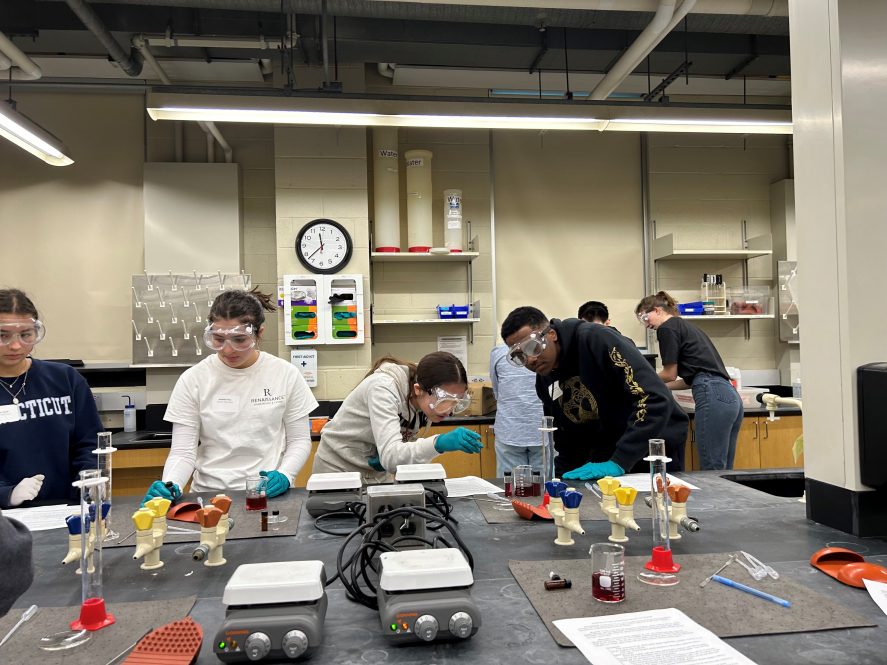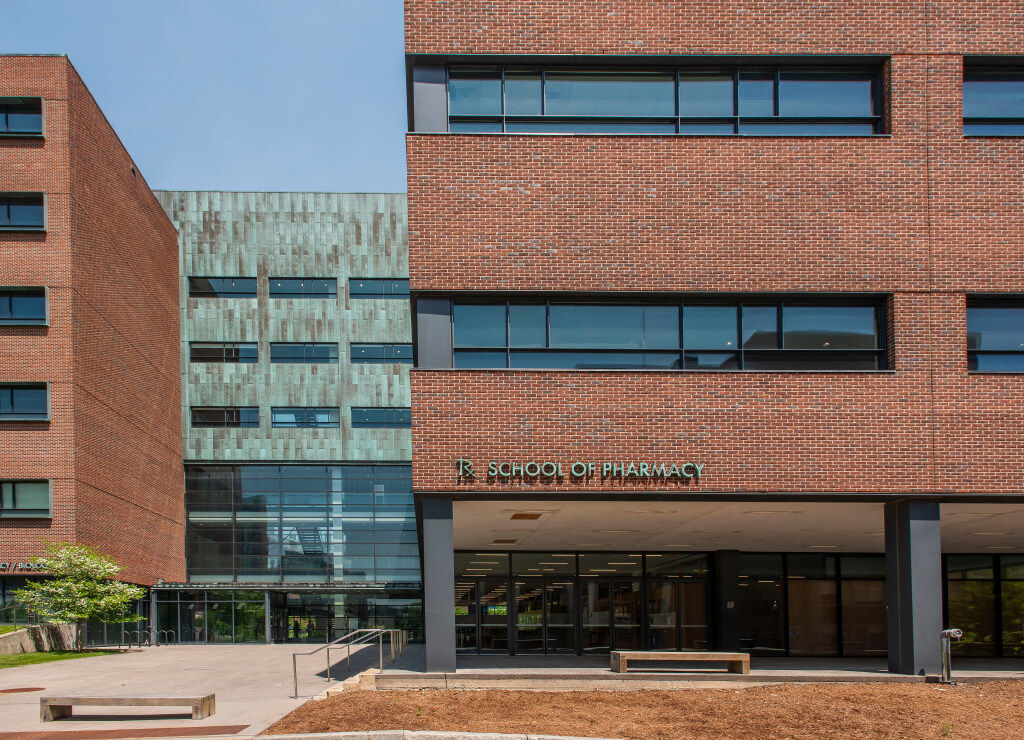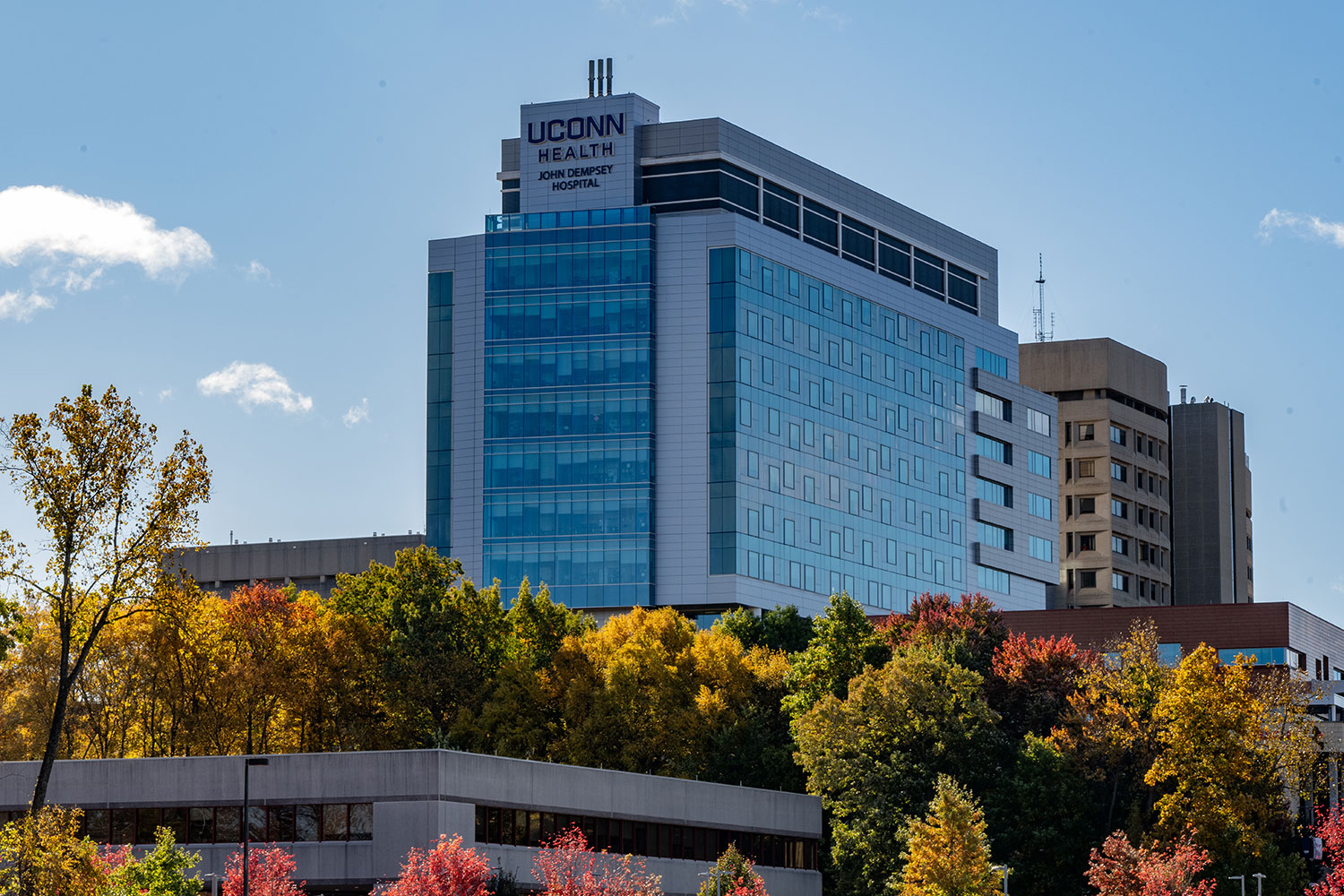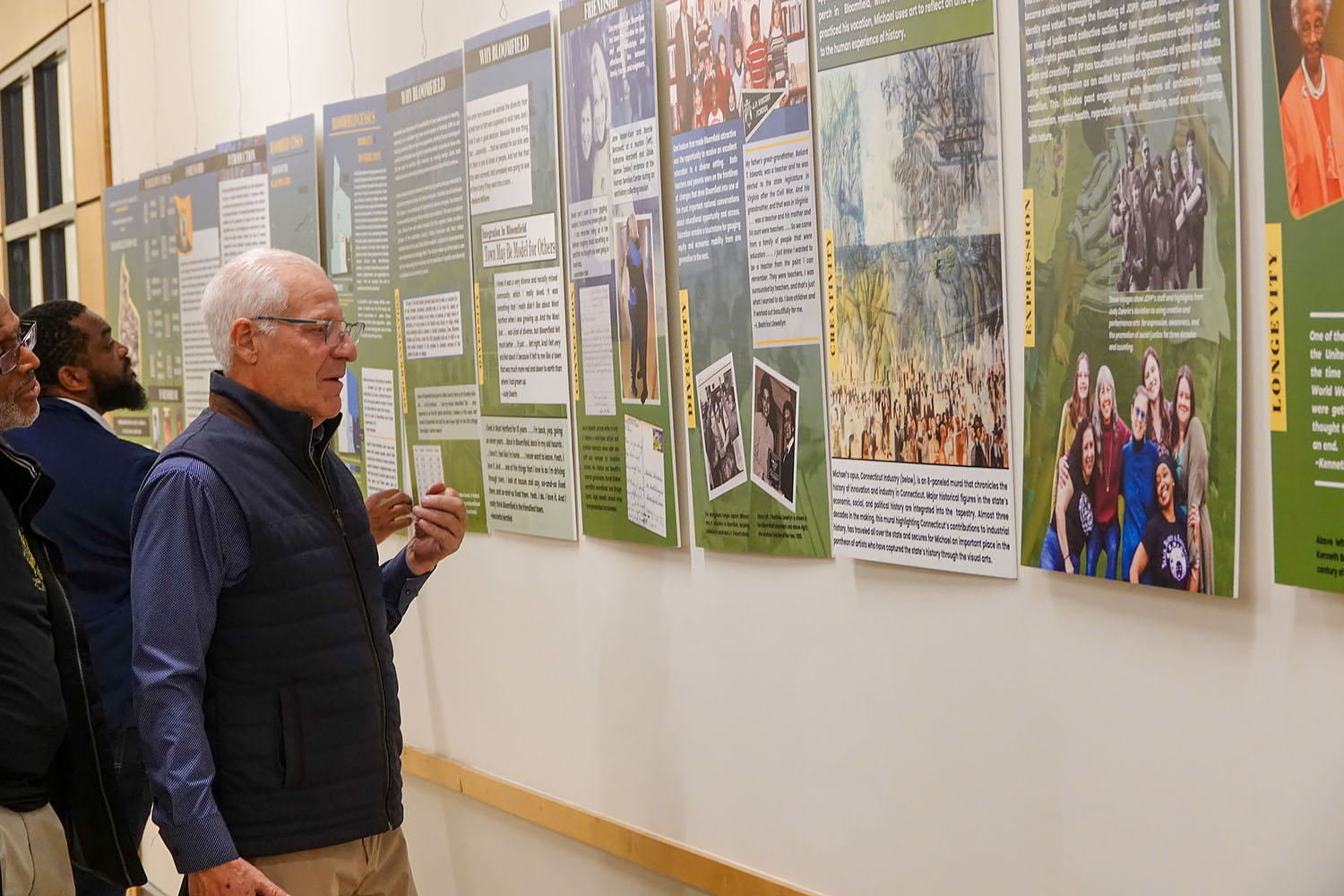On two successive weekends this month, the UConn Department of Chemistry hosted 45 high school students from around Connecticut to learn about key concepts in quantum mechanics for Molecular Quantum, or MolQ Day.
MolQ Day was developed by a team of UConn researchers including Department of Chemistry Associate Professor Tomoyasu Mani, Professor-in-Residence Fatma Selampinar, and Associate Department Head and Professor Jing Zhao.
The event was made possible due to funding that Mani and Selampinar received from NASA Connecticut Space Grant Consortium with matching funds from the Department of Chemistry and contributions from QuantumCT. Recruitment of participants was done in collaboration with the UConn Center for Access & Postsecondary Success and UConn Early College Experience. Mani explains that the event was designed to introduce some of the key concepts of quantum at the early stages of high school. Each day started with a short lecture followed by engaging hands-on demonstrations and experiments. The event is a part of the platform, QuanXR, created by Mani, Zhao and Digital Media and Design Assistant Professor Ting Zhou with the seed grant funding from UConn.
“One of the pillars of QuantumCT is the workforce development and our platform, QuanXR, is for developing different types of content to connect quantum phenomena or quantum mechanics, into the phenomena or technology that is all around us,” says Mani. “Many of the technologies around us use well-defined quantum phenomena that were translated into the technologies. For MolQ Day, we try to make those connections clear.”
Quantum concepts are tricky to explain, so the use of real-life examples is a clever strategy, with two key concepts serving as the theme explored on each day. The first MolQ Day on Nov. 9 focused on the key concept of quantum confinement, while MolQ Day on Nov. 16 focused on the concept of quantum spin.
To illustrate quantum confinement, students were introduced to “quantum dots,” which are semiconducting nanocrystals. Quantum confinement is a phenomenon observed when materials — like nanocrystals — are so small they restrict the movement of electrons in them. We can see this quantum effect in things like QLED screens, which use quantum dots that confine electrons. When back light passes through the quantum dots, the quantum dots emit different colored light depending on their size, creating a crisp image on the screen. The scientists who pioneered in the discovery and synthesis of quantum dots won the Nobel Prize in Chemistry in 2023.
To further explore quantum confinement, students experimented with quantum dots of different sizes, where different sizes emit different wavelengths of light. Typically, as light is emitted, Mani explains, it will move from a higher energy state to a lower energy state and appear in different colors of the visible light spectrum, depending on the size. To test this, students held glass vials containing different-sized quantum dots and, by holding the vials in front of an LED light, they tested on which wavelength the quantum dots emit light.
“Unfortunately, students cannot synthesize quantum dots because of the safety issues,” says Mani. “Instead of making the quantum dots, they synthesize gold nanoparticles in the laboratory, but we have also developed a VR game where students can synthesize quantum dots.”
The quantum dot modules were created by Zhao, and the QuanXR quantum dot VR game is a collaboration with Digital Media and Design Assistant Professor Ting Zhou.
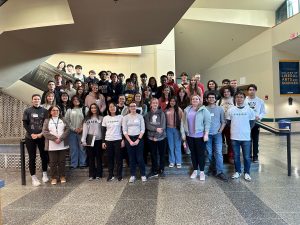
On Nov. 16, students explored the concept of electron spin. To illustrate its significance, they observed how electron spin interactions can be harnessed to convert lower-energy light into higher-energy light. Students created a gel containing two types of molecules that facilitate conditions of these spin interactions, Mani explains, allowing the energy flow from lower to higher energy states. This results in the emission of higher-energy light than what was used for excitation. This phenomenon, known as photon upconversion, was successfully demonstrated as students converted yellow and green lights into blue light.
“This is an example of something that is visually appealing, and I think chemistry gives a nice window through which students can interact with quantum concepts in an accessible way,” says Mani. “That is the whole point of the QuanXR and MolQ Days.”
Student response to MolQ day was very positive, says Selampinar, especially the hands-on experiments and the VR experience.
“Usually, since quantum concepts are difficult subjects for students to digest, we were expecting fewer students to be interested, but we ended up with a good attendance. That will help us in planning future events. We were anticipating around 20 students, but we ended with close to 70 students who were interested in the event,” says Selampinar.
“The students were asking lots of questions, which showed they were thinking about the concepts,” says Zhao. “They interacted a lot, especially while working on the modules in the lab.”
The event was successful in attracting prospective students, says Selampinar, which is another important aspect of initiatives like MolQ Day, and they hope to secure additional funding to hold MolQ Days annually.
“I was talking with a student who was very interested, and who was hoping to connect with Professor Mani about maybe working in his lab in the future,” says Selampinar. “Our objective is to introduce students to fundamental quantum concepts, fostering their interest in STEM disciplines, and encouraging them to explore related fields. It was great to expose students to these quantum concepts and see how excited they were about the topics.”
